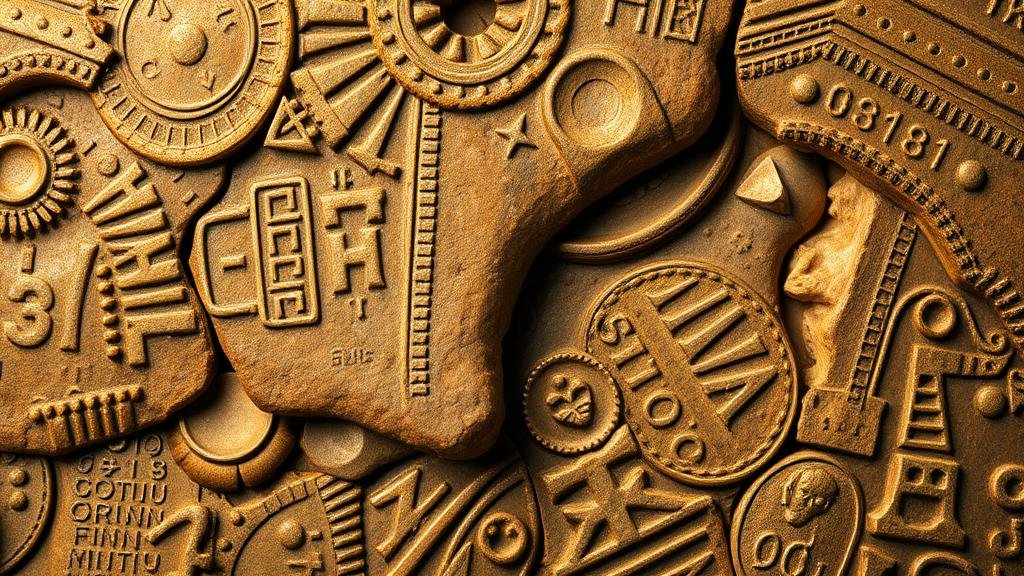Deciphering codes in ancient artifacts to unlock locations of buried treasures.
Deciphering Codes in Ancient Artifacts to Unlock Locations of Buried Treasures
Throughout history, buried treasures have captivated explorers, archaeologists, and treasure hunters alike. The possibility of discovering lost riches often lies in the interpretation of ancient artifacts that may contain codes or symbols pointing to their whereabouts. This article explores the techniques used in deciphering these codes, examined through notable real-world examples that illuminate the path to uncovering hidden treasures.
The Importance of Deciphering Codes
Deciphering codes in ancient artifacts not only aids in treasure hunting but also provides valuable insights into the cultures that created them. e codes can be found on a variety of artifacts including stones, pottery, and inscriptions. They often hint at burial sites, the rituals associated with them, or even the identity of the treasures themselves.
Techniques for Deciphering Ancient Codes
Several methodologies exist to decode ancient inscriptions:
- Historiography: Understanding the historical context in which a code was created can provide clues about its meaning.
- Comparative Linguistics: Analyzing similar languages and scripts can aid in translation.
- Digital Imaging: Advanced imaging technology helps reveal faded inscriptions that may not be visible to the naked eye.
Real-World Examples of Deciphered Codes
One of the most significant examples of deciphering ancient codes occurred with the Rosetta Stone. Discovered in 1799, this granodiorite stele features inscriptions in three scripts: Greek, Demotic, and hieroglyphic. By comparing the texts, scholars such as Jean-François Champollion were able to unlock the key to understanding Egyptian hieroglyphs, advancing our knowledge of ancient Egyptian culture and potentially the locations of hidden treasures.
Another remarkable case involved the discovery of a coded message within a 9th-century artifact known as the Codex Gigas or Devils Bible. Believed to have been created in a monastery, the codex contains an array of texts, and scholars have suggested that hidden messages within the illustrations could hint at lost treasures belonging to the Holy Roman Empire.
Case Studies of Buried Treasures
Several treasure hunts have successfully utilized deciphered codes to locate buried treasures:
- The Lost Dutchman Mine: Hidden in the Superstition Mountains of Arizona, clues about its location were encoded in vague inscriptions and maps created by Jacob Waltz in the late 19th century. These clues continue to spark interest among treasure seekers.
- The Codex Mendoza: This Aztec artifact contains accounts of the Aztec Empire’s wealth and could offer insights into the locations of buried treasures following the Spanish conquest in the 16th century.
The Role of Technology in Deciphering Codes
Recent advancements in technology have significantly improved the efficiency of code deciphering. Techniques such as 3D laser scanning and multispectral imaging allow researchers to examine artifacts with precision. For example, researchers have successfully analyzed ancient papyrus scrolls from Herculaneum, which were carbonized during the eruption of Mount Vesuvius in 79 AD, using these methods to reveal hidden texts.
Challenges in Deciphering Codes
Despite advancements, the process of deciphering ancient codes can be fraught with challenges:
- Incompleteness of Artifacts: Many artifacts may be damaged or incomplete, complicating the decoding process.
- Variability of Scripts: Variations in language and symbols over centuries can lead to multiple interpretations.
Actionable Takeaways
For those intrigued by the world of ancient artifacts and the treasures they may conceal, consider these actionable takeaways:
- Study historical contexts. Understanding the history behind the artifacts can provide valuable insights when attempting to interpret codes.
- Use technology. Engage with digital tools and advanced imaging to uncover details that are not visible in traditional views.
- Collaborate with experts. Build a network of historians, archaeologists, and linguists to enhance your understanding and interpretation capabilities.
To wrap up, deciphering codes in ancient artifacts presents a thrilling intersection of history and treasure hunting. As techniques evolve and technologies improve, the potential to unlock hidden locations of buried treasures becomes ever more accessible, fueling a timeless fascination with the past.



